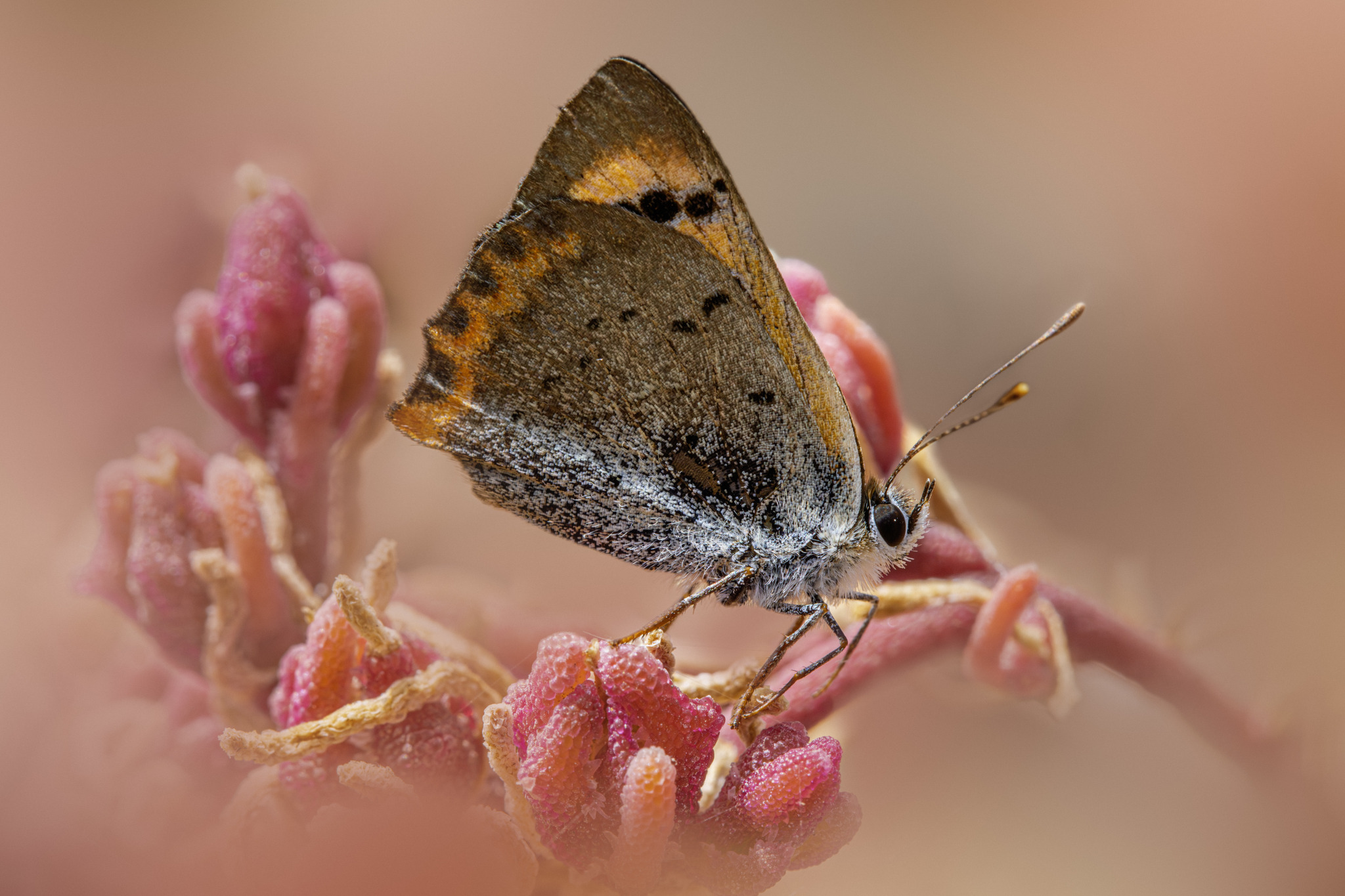The Small Copper (Lycaena phlaeas) is a small yet brilliantly colored butterfly, widely distributed and easily recognizable due to its vivid orange and black wings. It belongs to the family Lycaenidae, which includes many of the world’s most vibrant butterfly species.
Physical Description
- Wingspan:
- 25–35 mm (1.0–1.4 inches).
- Coloration:
- Upper Side:
- Forewings are bright orange with dark brown spots and a dark border.
- Hindwings are dark brown with an orange marginal band.
- Under Side:
- Forewings are pale orange with grayish margins and black spots.
- Hindwings are gray-brown with small black spots and an orange edge.
- Upper Side:
Behavior
- Flight Period:
- Multiple broods occur from April to October, depending on location and climate.
- Feeding:
- Adults feed on nectar from a variety of flowers, including dandelions, buttercups, and clovers.
- Activity:
- Energetic and territorial, often basking in sunny spots or chasing intruders.
Habitat
- Found in a wide range of open habitats, including:
- Grasslands and meadows.
- Heathlands and sand dunes.
- Roadsides, parks, and gardens.
- Thrives in areas with abundant larval host plants, such as sorrels and docks (Rumex species).
Life Cycle
- Eggs:
- Laid singly on the leaves of larval host plants, such as common sorrel (Rumex acetosa) or sheep’s sorrel (Rumex acetosella).
- Caterpillars:
- Small and green with a yellow stripe along the back, feeding on the leaves of host plants.
- Pupae:
- Form a compact, brownish chrysalis attached to low vegetation or in leaf litter.
- Adults:
- Emerge after 2–3 weeks and live for about 3 weeks, during which they are highly active.
Distribution
- Widely distributed across Europe, Asia, and North Africa.
- Found in temperate to subtropical regions, from lowlands to moderate altitudes.
Conservation Status
- Considered Least Concern, but local populations may face threats from:
- Habitat loss due to agricultural intensification or urbanization.
- Pesticide use reducing host plant availability.
- Conservation actions focus on maintaining wildflower-rich habitats and minimizing the use of chemicals in agricultural areas.
Ecological Role
- Pollination:
- Contributes to the pollination of wildflowers by feeding on their nectar.
- Prey Species:
- Serves as food for birds, spiders, and predatory insects during its larval and adult stages.
Interesting Facts
- Bright Colors for Defense:
- The vibrant orange and black markings on its forewings are thought to deter predators by signaling unpalatability.
- Territorial Behavior:
- Males aggressively patrol sunny spots, chasing away rivals and courting females.
- Adaptability:
- Can thrive in disturbed areas, including gardens and urban greenspaces, making it one of the most familiar butterflies to nature enthusiasts.
Summary
The Small Copper (Lycaena phlaeas) is a delightful butterfly that adds a splash of color to a variety of habitats. Its adaptability and striking appearance make it a favorite among butterfly watchers. Efforts to preserve wildflower habitats will ensure that this vibrant species continues to flourish in the landscapes it graces.
Visited 30 times, 2 visit(s) today
Views: 413
Subscribe to the newsletter:
